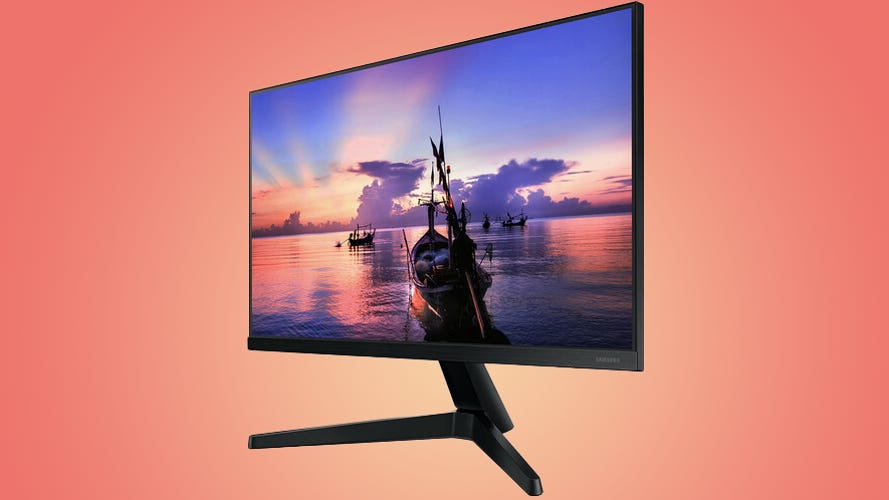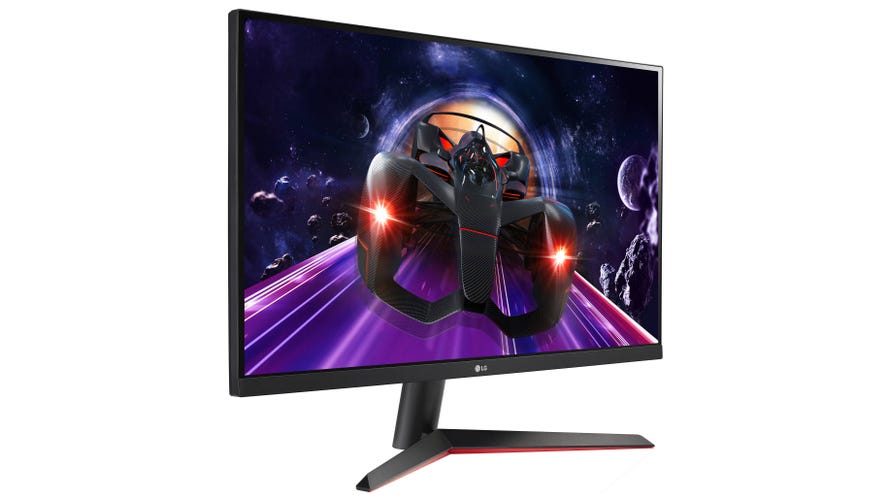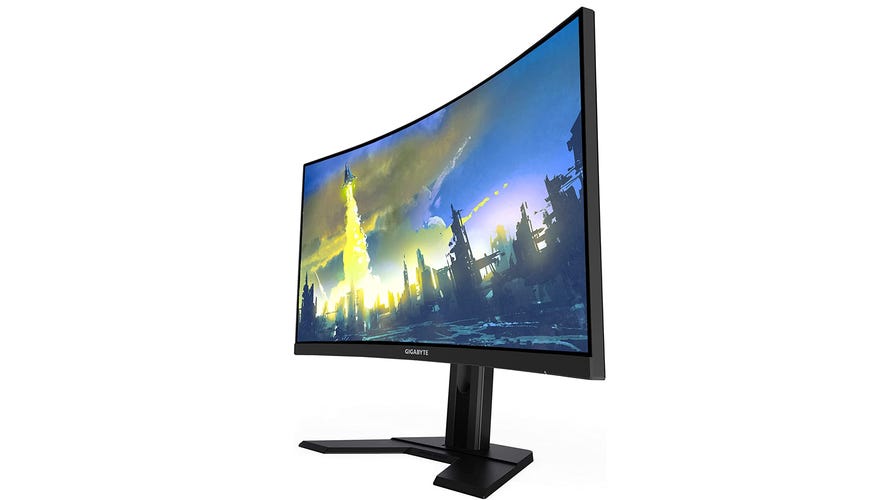From a monitor for your desktop PC to a second screen for a laptop setup, a good monitor makes a huge difference. However, you don't have to drain your wallet to get the setup of your dreams. It may seem like you need to spend over $500 for a decent monitor, but that's far from the truth. There are plenty of options under $200 with great display and price. These are our top picks for the best monitor under $200 below. Some of the best options are even more affordable right now, thanks to the holiday season deals.
Our Picks
There are a few things to keep in mind when shopping for the best monitors: When buying a budget monitor, you should check out the listing to see what's included. Make sure it's not missing items that you would have to purchase separately and that would drive the price above that "cheap monitor" threshold, like a stand or cables. The stand might not be an issue if you're planning to use the VESA mount to put it on a wall or arm. But in that case, you should ensure the mount screws on the back of the monitor match yours: The bulk of these have 100x100-millimeter mounts, but in some cases, they have 200x200mm or 75x75mm mounts -- or they don't support a VESA mount at all.
Got a Mac? If it's an old MacBook Pro with an HDMI port, or an iMac or Mac Mini, you won't have a problem. MacBooks with USB-C/Thunderbolt 3 connections will require an adapter or cable with conversion built-in because they won't have a dedicated display port. You may also need to fiddle with the resolution and scaling settings in Mac OS, since it natively prefers a 16:10 aspect ratio, not the 16:9 aspect ratio that's much more popular on Windows.
Read more:How to Buy a Monitor for Gaming or Working From Home
Unless you're a hardcore gamer or creative professional, many of the most technical specs -- latency and color gamut, for example -- won't really matter to you (though many of these could serve as a budget gaming monitor). You should always take them with a grain of salt, anyway.
For less than $200, you can generally expect to get:
- A maximum of 1,920x1,080-pixel screen resolution (dubbed by marketers as "Full HD resolution" and also referred to as 1080p or 2K for its roughly 2,000 pixels across). Below 27 inches, that's fine. At 27 inches or larger, it's not great except in one important case. Essentially, the reason you buy a 27-inch monitor over a 24-inch is usually because you want to fit more on to it. But if it's using the same number of pixels, it just makes everything bigger -- it doesn't put more on the screen. And because it's spreading them across a bigger screen, some people (like me) may get annoyed at seeing the pixel grid. I find a pixel density (the number of pixels per inch, or ppi) of at least 90 a good balance, but YMMV. The exception? If you actually need things like text to be bigger, such as if you have impaired vision.
- A stand that lets you tilt the computer monitor, not raise or lower it. We want to reduce eye strain and optimize ergonomics wherever possible.
- While there might be one or two larger, the monitors go mostly up to 27 inches.
- Between 250 and 350 nits of brightness. That should be fine for most uses.
- Up to 75Hz refresh rate for an IPS (which stands for in-plane switching) monitor or 144Hz refresh rate for a TN (twisted nematic). A high refresh rate matters if you're planning to play a lot of FPS, racing, fighting or other motion-sensitive gaming. An IPS monitor is better for general-purpose use, since it's superior for off-angle viewing and typically has better color. But the fastest IPS monitor you'll find for the money is 75Hz. A TN monitor is better for fast gaming and a better gaming experience; it has a higher contrast ratio, but poorer viewing angle -- color accuracy and contrast changes as you move further from looking straight-on.
- If it comes with built-in speakers, don't assume they're a replacement for real standalone versions. They're occasionally better than expected, but think of the speakers as a nice perk for basic system sounds or videoconferencing and consider it a windfall if they're satisfactory for entertainment. (I've been relatively impressed with the speakers in BenQ's EW series.)
- A lot of these cheap monitors support AMD's adaptive refresh FreeSync technology, which works with AMD's graphics processors for syncing game frame rates with the display.
- A curved monitor, which can make a wide display fit into your field of view without requiring you to sit too far back, isn't worth paying more for in monitors 27 inches or smaller; then the bezels are too far within your field of view. One potential exception is if you plan to span across three identical monitors for gameplay. Then they wrap around you better than three flat screens.
Upping your budget to between $200 and $300 will bring more 32-inch screen size options and 2,560x1,440 resolution. And, of course, the more you're willing to spend, the more you're likely to find something in stock and ready to ship.
Read more: Best Speakerphone for Working From Home
If you are looking for budget gaming monitors, this budget FHD monitor's 75Hz refresh gives you a little latitude for gaming and has an IPS panel for better color and viewing angle in the sea of VA competitors; plus, this cheap gaming monitor option is pretty attractive with thin bezels and a stand that's less clunky-looking than some. You'll get an HDMI cable in the box, and it has a 100x100 VESA mount. There are some drawbacks, such as some backlight bleed that buyers have noticed, and it has an HDMI 1.4 connection instead of 2.0 (if you care), plus the stand only allows the screen to tilt, not raise or lower.
This looks to be a more recent follow-up to the 27MK600M-B we tested, with a different stand and a DisplayPort connection instead of the second HDMI. Like that one, it's got some gaming perks, identical to the 24-inch LG I mentioned above.
I don't like curved 27-inch monitors or VA panels much, but in a sea of 75Hz options, the Gigabyte is a refreshing 165Hz. That makes it a lot more suited to gaming than all the 75Hz models. It also has a greater-than-sRGB color gamut, low-power stereo speakers and a USB hub, which you rarely find together in this price class.
The LG is a solid, attractive general-purpose choice with some gaming perks. Though I'd hardly call it a gaming monitor, it has features for a good gaming experience, such as AMD FreeSync support, the ability to overdrive the response time, a 1ms motion-blur reduction mode and an optional center crosshair. It's slightly brighter than most, and there's a Photo mode that seems to improve the color accuracy. It's got a VGA connector in addition to the two HDMIs (though that's not uncommon in this price range) if you've got a really old device to connect. The 24-inch is a smaller version of the 27-inch monitor we tested which has since been discontinued (though still available in places at a much higher price).
This big 'un doesn't have ultraskinny bezels or a curved screen -- it's four years old -- but when you consider its size, a 75Hz refresh rate and USB-C DisplayPort connector (as well as two HDMI 1.4 ports), you get a lot for the money. It often lists for closer to $300, but right now you can snag it for less than $200 at Amazon and Walmart, making it a pretty good value for the features. There's a slightly more game-oriented model for $200, the 29WP60G-B, with FreeSync support, thinner bezels and a slightly sleeker design, but don't get FOMO over the "HDR" you'll see in the name; it has the same color and brightness specs as the cheaper model. LG has simply added decoding hardware that lets it more-or-less intelligently cram real HDR content to the dim, small gamut display, which is never pretty.
More work-from-home and computing recommendations
- 7 Must-Have Ergonomic Upgrades for Your Home Office
- Best Laptop for 2024
- The 7 Best Blue Light Blocking Glasses to Prevent Eye Fatigue
- Best VPNs for 2024
- 3 Great VPNs for Xbox in 2024
- Best Standing Desk Converters for 2024
- Best Chromebook Deals: Save $200 on Acer Spin 514 and Samsung Galaxy 2 and More
- Want to Learn Python? We Found 5 Online Coding Courses for Beginners
- The Best Monitors According to the CNET Staff Who Use Them








